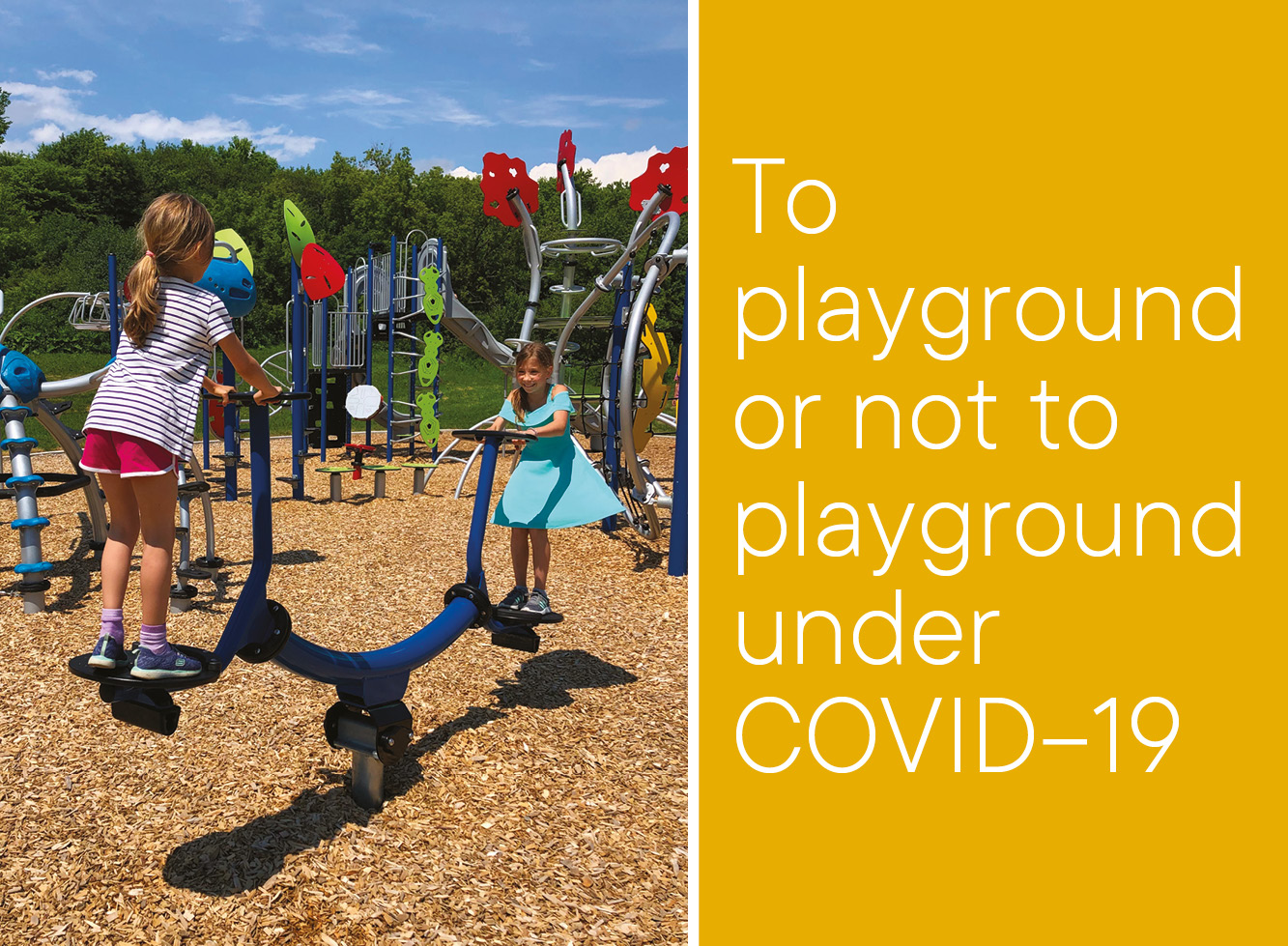To playground or not to playground under COVID-19

Chances are that if a playground is teeming with children, it’s also teeming with germs. And COVID-19 represents a major challenge in a play environment.
After all, before children touch play equipment (and each other), they’ve been known to sneeze with abandon and wipe their noses with their hands. Handwashing after using the bathroom may prove too time-consuming to a child who wants to get back to the playground and have fun.
THE REALITY
In most outdoor playspaces, the play equipment is cleaned infrequently, if at all. Most playground owner/operators count on Mother Nature to do the cleaning. And for the most part, Mother Nature does a good job. However, there are still plenty of germs at an outdoor playground. Nasty germs can spread quickly as small hands grasp the swing chain, use the handgrips on the monkey bars, and push o from the slide. It turns out that playgrounds may be home to way more germs than virtually any surface in your home. And sick children playing there can be an even greater health threat than the germs already on the playground equipment.
Without consistent, proper cleaning and sanitation, public play- ground equipment can be a breeding ground for a host of bacteria and germs that cause mild to serious health issues. Norovirus, E. coli, salmonella, hepatitis A, and coronaviruses—including the new COVID-19 coronavirus—are just a few of the common bacteria and viruses that can be found in public playspaces.
Owner/operators of playgrounds and playspaces face a constant challenge in keeping surfaces clean without damaging them or creating hazards for users through the use of barriers and hazardous chemicals
In these times of "social distancing", we believe that playground equipment at your local park or school is just as safe (or dangerous) today as it was last month or last year. The main problem with playgrounds in today’s COVID-19 world is that they are social gathering places. In other words, the biggest risk isn’t the equipment, but rather the people who may spread COVID-19 when they use public parks and playgrounds.
The science of COVID-19 is still quite preliminary, and experts don’t actually know how readily contaminated surfaces cause infection. What they do know is that most cases of COVID-19 come from direct person-to-person contact. Experts acknowledge that coming into contact with contaminated surfaces most likely contributes to the outbreak, but this type of transmission has not yet been documented.
Click here to download the full article.
